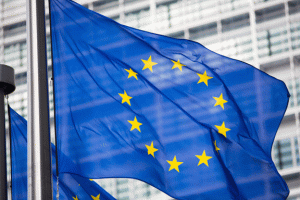EUROFER: Imports, Slower Growth, Raw Material Costs Form ‘Perfect Storm’
It’s been a busy and somewhat bumpy year for Europe’s steel sector.
Need buying strategies for steel? Request your two-month free trial of MetalMiner’s Outlook
The E.U. approved steel safeguards in January that would extend to 2021 at the latest, an effort by the bloc to mitigate the impact of steel supplies diverted as a result of the U.S.’s Section 232 tariff on steel.
More recently, a proposed joint venture between India’s Tata Steel and Germany’s Thyssenkrupp — agreed to by the firms in September 2018 — fell apart amid regulatory scrutiny from the European Commission. The joint venture would have merged the two firms’ European operations, creating Europe’s second-largest steelmaker (behind only ArcelorMittal).
This week, British Steel is reportedly facing the risk of falling into administration, as it came to the government again in request of emergency assistance. The steelmaker, the U.K’s second-largest, has blamed the uncertainty caused by Brexit for much of its ills.
In addition, slowing economic growth and rising raw material costs have impacted the steel sector. The iron price has soared past $100 per ton, aided by supply-side disruptions in Brazil and Australia this year.
According to the Organization for Economic Co-operation and Development (OECD), the global company is expected to achieve “moderate but fragile” growth over the next two years.
“Vulnerabilities stem from trade tensions, high policy uncertainty, risks in financial markets and a slowdown in China, all of which could further curb strong and sustainable medium-term growth worldwide,” the OECD said.
According to the European Steel Association (EUROFER), a number of factors are serving as a drag on the European steel sector’s fortunes.
“Surging import volumes, stalling economic growth, high and volatile raw material costs and sharply growing carbon costs are coming together to form a perfect storm that could knock the European steel industry back into a period of severe crisis,” the association said in a release last week. “The impact of this combination of factors has already begun to affect European steel producers, with facilities being idled and production being cut back significantly across Europe.”
MetalMiner’s Stuart Burns covered ArcelorMittal’s decision to idle or cut production at its facilities in Krakow, Poland, and at Asturias in Spain. As Burns noted, in announcing the moves, ArcelorMittal characterized the E.U.’s steel safeguard measures as insufficient. The production cuts amount to 3 million tons of annualized production, or 7% of ArcelorMittal’s European output last year.
EUROFER forecasts a gloomy 2019 for global steel demand, which it estimates will fall by 0.4% this year after increasing 3.3% in 2018.
“This stalling demand coincides with import volumes rising at an ever faster rate. These grew by 12% year-on-year in 2018 – 2017 was already a record – and 2019 might see volumes increase even further,” EUROFER Director General Axel Eggert. “This import growth underlines the absurdity of a safeguard which includes programmed periodic ‘relaxations’ of 5%: in February and July 2019, and again in July 2020 – even though demand is expected to be flat. This is an overgenerous gift to steel exporters to the EU.”
Eggert underscored the steel safeguard measures’ ineffectiveness and referred to the threat to the European steel sector in existential terms.
MetalMiner’s Annual Outlook provides 2019 buying strategies for carbon steel
“Despite being well-intentioned, the current steel safeguard framework has not prevented surging imports,” he said. “EU producer margins are on the floor, which undermines their ability to invest in skills, technology and low-carbon development. The alarm bells are already ringing and action is required today to prevent this flood washing the sector away.”



Leave a Reply